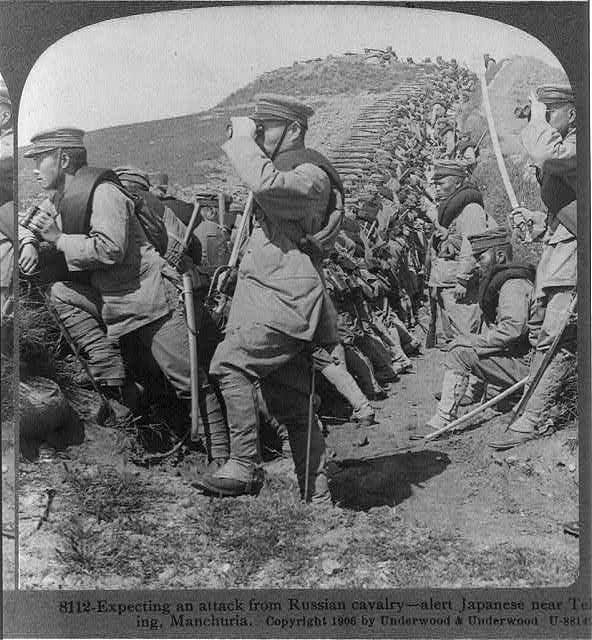Saturday, April 3, 2021
Nijo castle, Kioto. [1890]
Thursday, January 28, 2021
Map of the Russo-Japanese War with a chronological sequence of major events.
June 10, 1904 The Hawaiian Gazette (Honolulu Oahu, HI), Image 2. Chronicling America: Historic American Newspapers.
The Hawaiian gazette. [volume] (Honolulu [Oahu, Hawaii]) 1865-1918, June 10, 1904, Image 1
Image provided by University of Hawaii at Manoa; Honolulu, HI
Persistent link: Link to Image
[Postcard] Sport of Russian Prisoners in the 'Higashi Honganji' Quarter, Nagoya, Japan : Superb piece of history 1904-05
During the Russian-Japanese War, captured Russian soldiers are made to dance for Japanese commanders as a way of making sport of the prisoners' compromising situation as POWs. The Japanese army went on to win the war.
Artist unknown, Japanese
Publisher: Ogawa Isshin (Japanese, 1860–1929) Japanese : Late Meiji era Place of Creation: Japan
Monday, December 14, 2020
Launch of Japanese man-of-war "Chitosa" {1898}
Summary:
Shows the launching of the Imperial Japanese Navy cruiser Chitose at the Union Iron Works shipyard, San Francisco, on Saturday, January 22, 1898. The camera view is east, across a small inlet of Central Basin, to slipway no. 1. Four additional slipways lay beyond to the west. The camera viewpoint is today called pier 68, part of Southwest Marine's facilities. The launch took place at 10:25 a.m. before a crowd of 200 distinguished guests and over 1,000 members of the public, as well as many shipworkers. Numerous workers can be seen dangling from the framework of the assembly shed [Frame: 1030], and a large crowd watches from a grandstand at the rear. Men and boys watch from small boats in the foreground and two boys jump into the water fully clothed near the end of the film [Frame: 1570]. Miss May Budd, niece of California governor James Budd, christened the ship with a bottle of California wine. Miss Gladys Sullivan, niece of San Francisco mayor James Phelan, pressed the button that sent the ship down the slipway. Following a Japanese custom symbolizing the peace-keeping role of a warship, 100 doves were released at the same moment. Bands played and Japanese fireworks were set off as the Chitose slid into the Bay. United States Army and Navy officials, state and city officials, and the consular corps attended the launching. Japanese Consul General Segawa explained in a speech at the following luncheon that Chitose meant "a thousand years of peace" in Japanese, and hoped that the ship would fulfill that wish. Contributor Names White, James H. (James Henry), production. Blechynden, Frederick, camera.Thomas A. Edison, Inc. Paper Print Collection (Library of Congress)Created / Published United States : Thomas A. Edison, Inc., 1898.
Friday, December 4, 2020
[Hirohito, Emperor of Japan, 1901- , full-length portrait, seated, in coronation regalia]
[1926]
Notes
- Photo by Underwood & Underwood.
- This record contains unverified, old data from caption card.
Medium
1 photographic print.
Call Number/Physical Location
BIOG FILE [item] [P&P]
Repository
Library of Congress Prints and Photographs Division Washington, D.C. 20540 USA
Digital Id
cph 3a46052 //hdl.loc.gov/loc.pnp/cph.3a46052
Library of Congress Control Number
2005685570
Reproduction Number
LC-USZ62-45866 (b&w film copy neg.)
Rights Advisory
No known restrictions on publication. For information see "Underwood & Underwood," https://www.loc.gov/rr/print/res/468_unde.html
Language
english
Online Format
image
Description
1 photographic print.
Original Format
photo, print, drawing
LCCN Permalink
https://lccn.loc.gov/2005685570
Rectangular shaped Japanese flag with centrally printed hinomaru (rising sun).
Description:
Rectangular shaped Japanese flag with centrally printed hinomaru (rising sun). On the flag are many hand written inscriptions, including patriotic phrases and signatures in Japanese. Along the top of the flag above the hinomaru in bold black ink is the traditional 'Good fortune & good luck in war'. Written vertically on the left hand side of the hinomaru is 'Yamaai Machinery Factory Ltd'. The signatures of many work mates who worked at this factory make up the majority of the Japanese writing on lower half of the flag and the area immediately around the hinomaru.
To the right of the hinomaru in bold black ink is 'Nikawa Toru', presumably the name of the flag's owner. In the upper right hand side of the flag is more bold black ink which is a personal good luck message or slogan. On the corners of the flag upper and lower hoist are the remnants of triangular shapes pieces of sewn paper reinforcements. Attached to the upper hoist is a length of cotton string consisting of two different string pieces. Written in blue ink on the rear of this sewn paper reinforcement is the letter 'M'.
History / Summary
This autographed Japanese flag relates to the service of NX79396 Private Kelvin King during the Second World War. King was born on 25 October 1922 in Kempsey New South Wales. On 18 December 1941 he enlisted into the Second AIF at Paddington in Sydney. At the time of his enlistment he was living in Carlton, a suburb of Sydney.
Although he enlisted in the Second AIF, he was posted as an AIF reinforcement to a CMF unit, the 3rd Battalion 'Werriwa Regiment' . He embarked with his unit to New Guinea and took part in the heavy fighting along the Kokoda Trail in late 1942. The 3rd Battalion was involved in savage fighting against strongly held Japanese rear guard positions at Templeton's Crossing in October 1942. Whilst at Templeton's Crossing he collected this flag from the body of an Imperial Japanese Army Officer.
Having survived the Kokoda Trail campaign and later bloody 'Battle of the Beach heads' around Buna, Gona and Sanananda, King returned with the heavily depleted 3rd Battalion to Australia in early 1943. In April 1943, the 3rd Battalion was disbanded and King was transferred to the 2/4th Battalion. In 1944 he was a member of the Battalion band (featured in the AWM image 081179). King discharged from the AIF on 16 November 1945.
The 3rd Militia Battalion 'Werriwa Regiment' is one of only two Militia Battalions to fight alongside its AIF 'sister' battalion (the 2/3rd Battalion). It also was the only combined Militia/AIF Battalion to serve during the Second World War.
Thursday, December 3, 2020
Wednesday, November 11, 2020
[Showa Emperor and Battleships] 1929
Title.English
[ip0222]
[Showa Emperor and Battleships]
Title.Japanese 聖上陛下 御召艦那智 御召艦長門 - 1929
Hirohito

Friday, November 6, 2020
[Japanese samurai in medieval armor destroying the Allied Navy].
WWII Propaganda Poster.
Author: Gino Boccasile; Partito nazionale fascista (Italy) Publisher:[Milano] : [Partito Nazionale Fascista], [approximately 1940] Edition/Format: Image : Flash card : Picture Rating:
(not yet rated) 0 with reviews - Be the first.
Subjects
World War, 1939-1945 -- Italy -- Propaganda.
Propaganda, Anti-American -- Italy.
Propaganda, Anti-British -- Italy.

Thursday, October 1, 2020
Survival of the Fittest: Political Cartoon (1800s)
The survival of the fittest
Author: Udo J Keppler Publisher: N.Y. : Published by Keppler & Schwarzmann, 1898 June 1. Edition/Format: Image : Graphic : Original artwork : Picture : English Summary: Print shows a scene at dueling grounds in a wooded area where a duel has taken place between a tattered buccaneer labeled "Spain" and "Medievalism" and Uncle Sam who is holding a sword labeled "19th century Enlightenment", on the ground between them is a broken sword labeled "Misrule". Two figures, possibly acting as seconds, one labeled "Austria" (Franz Joseph I) and the other representing Germany (William II), are supporting "Spain" between them, and a man carrying a doctors bag labeled "France" is rushing from behind to attend to the wounded man. John Bull and "Japan" (Meiji) are standing behind Uncle Sam. |
|---|

Monday, September 21, 2020
Chairman Mao (Zedong's) Message to the Japanese Worker
| Description: Ann Tompkins (Tang Fandi) and Lincoln Cushing Chinese Poster Collection. The inscription reads: "The Japanese revolution will undoubtedly be victorious, provided the universal truth of Marxism-Leninism is really integrated with the concrete practice of the Japanese revolution. Written for our friends the Japanese workers, in compliance with the request of the friends on the Japanese Delegation to China of Worker Activists in Study. MAO TSE-TUNG September 18, 1962"--Translation of Mao Zedong's inscription from the poster. |
Sunday, March 8, 2020
World War 2 : The American Bombing of Nagasaki : 08/09/1945 : The "Fat Man" Bomb
Click the following link to access images related to the Nagasaki bombing.
The Library of Congress of the United States of America
[gallery ids="3099,3100,3101" type="circle" columns="1"]
World War 2 : The American Bombing of Hiroshima : 08/06/1945 : The "Little Boy" Bomb
[gallery ids="3052,3053,3054,3055,3056,3057,3058,3059,3060,3061,3062,3063,3064,3065,3066,3067,3068,3069,3070,3071,3072,3073,3074,3075,3076,3077,3078,3079,3080,3081,3082,3083,3084,3085,3086,3087,3088,3089,3090,3091,3092,3093,3094" type="slideshow"]








